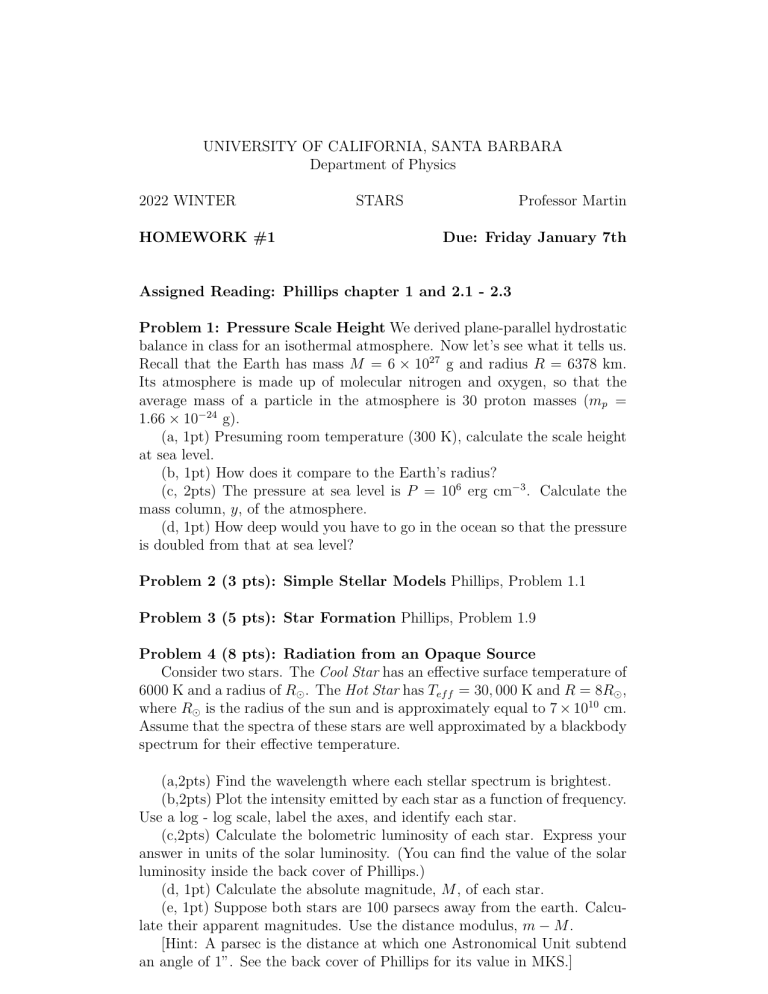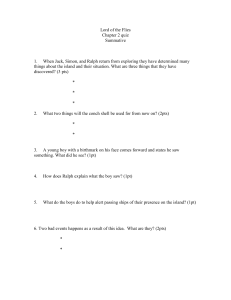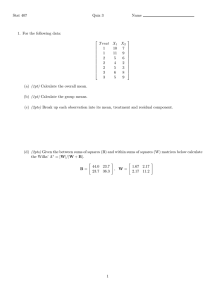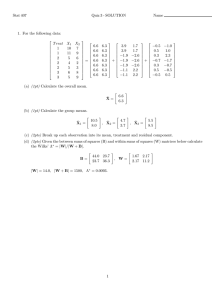
UNIVERSITY OF CALIFORNIA, SANTA BARBARA Department of Physics 2022 WINTER HOMEWORK #1 STARS Professor Martin Due: Friday January 7th Assigned Reading: Phillips chapter 1 and 2.1 - 2.3 Problem 1: Pressure Scale Height We derived plane-parallel hydrostatic balance in class for an isothermal atmosphere. Now let’s see what it tells us. Recall that the Earth has mass M = 6 × 1027 g and radius R = 6378 km. Its atmosphere is made up of molecular nitrogen and oxygen, so that the average mass of a particle in the atmosphere is 30 proton masses (mp = 1.66 × 10−24 g). (a, 1pt) Presuming room temperature (300 K), calculate the scale height at sea level. (b, 1pt) How does it compare to the Earth’s radius? (c, 2pts) The pressure at sea level is P = 106 erg cm−3 . Calculate the mass column, y, of the atmosphere. (d, 1pt) How deep would you have to go in the ocean so that the pressure is doubled from that at sea level? Problem 2 (3 pts): Simple Stellar Models Phillips, Problem 1.1 Problem 3 (5 pts): Star Formation Phillips, Problem 1.9 Problem 4 (8 pts): Radiation from an Opaque Source Consider two stars. The Cool Star has an effective surface temperature of 6000 K and a radius of R . The Hot Star has Tef f = 30, 000 K and R = 8R , where R is the radius of the sun and is approximately equal to 7 × 1010 cm. Assume that the spectra of these stars are well approximated by a blackbody spectrum for their effective temperature. (a,2pts) Find the wavelength where each stellar spectrum is brightest. (b,2pts) Plot the intensity emitted by each star as a function of frequency. Use a log - log scale, label the axes, and identify each star. (c,2pts) Calculate the bolometric luminosity of each star. Express your answer in units of the solar luminosity. (You can find the value of the solar luminosity inside the back cover of Phillips.) (d, 1pt) Calculate the absolute magnitude, M , of each star. (e, 1pt) Suppose both stars are 100 parsecs away from the earth. Calculate their apparent magnitudes. Use the distance modulus, m − M . [Hint: A parsec is the distance at which one Astronomical Unit subtend an angle of 1”. See the back cover of Phillips for its value in MKS.]




